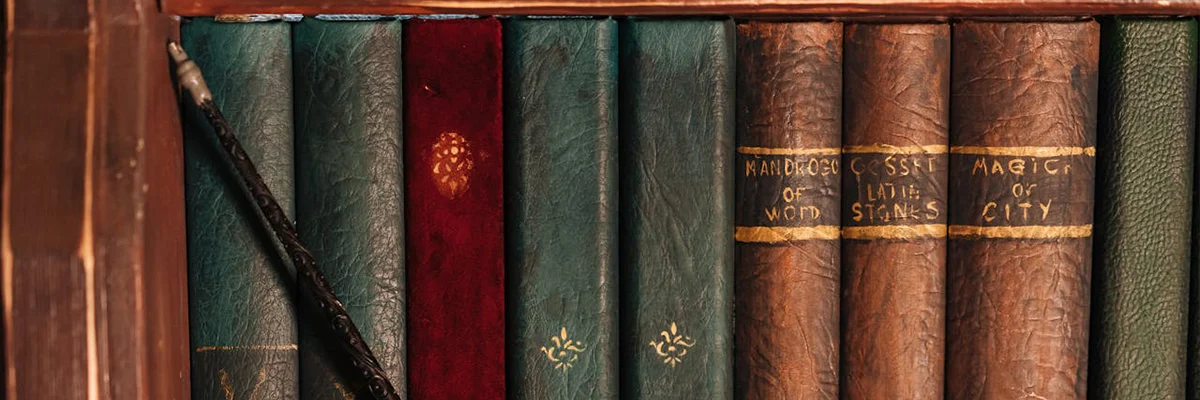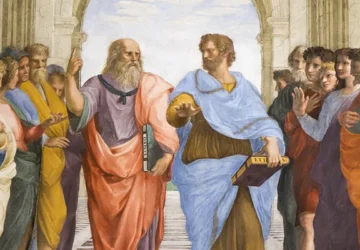
Sci-Fi vs Fantasy: Key Differences and What to Read
On the surface, the difference seems simple. One genre has spaceships and aliens. The other has dragons and elves. Science Fiction, we are told, is about the future, and Fantasy is about the past.
This is a shallow analysis. And it is wrong.
This “aesthetic” definition one of props and settings collapses immediately under any real scrutiny. “Star Wars” has spaceships, but it also has magic “Wizards” and a “Dark Lord.” “Dune” is set in a far future empire, but it has no computers, and its characters fight with knives.
The true difference between Science Fiction and Fantasy is not one of aesthetics. It is one of philosophy.
The real conflict is not between spaceships and dragons. It is between the possible and the impossible.
Sci-Fi is the literature of “what could be.” It is a literature of extrapolation. It takes a real-world concept science, technology, politics, biology, sociology and builds a world by pushing that concept to its logical, (often terrifying) conclusion.
Fantasy is the literature of “what could not be.” It is a literature of invention, or myth. It is not bound by our world’s rules. It breaks them and, in their place, creates new, supernatural rules (magic).
One genre is an extrapolation of our reality. The other is a departure from it.
Understanding this single key difference is the key to unlocking both genres. It allows us to see why they feel so different, and it is the only real tool to help you, the reader, decide what you are truly in the mood for.
The Literature of the Possible (Science Fiction)
Science Fiction, at its core, is a genre of “What If?”
What if a computer network became conscious? What if humanity could travel faster than light? What if we could re-engineer our own DNA? What if a future government had total surveillance over its people?
The “science” in “science fiction” is the chain that keeps the story tethered, however loosely, to our own reality. The author must provide (or at least imply) an explanation for their world. The technology may not exist yet, but the story assumes it could. It is born from our world.
The Archetype: “Dune” by Frank Herbert (1965)
Many readers mistake “Dune” for fantasy. It has a galactic “Emperor,” noble “Houses,” a witch-like “sisterhood” (the Bene Gesserit), and a “messiah.” But “Dune” is one of the purest, hardest examples of science fiction ever written.
Its world is not built on magic. It is built on ecology.
The central “what if” of “Dune” is: What if there was a planet that was a perfect, closed ecological system, and what if the most valuable resource in the universe could only be produced by that system?

Everything in the novel flows from this single, scientific premise.
-
The Spice: The “magic” resource is not magic. It is the byproduct of the giant sandworms’ life cycle. It’s a biological, chemical substance.
-
The Fremen: The “natives” of Arrakis are not magical. They are a perfect example of human adaptation. Their blue-in-blue eyes are a result of spice saturation. Their “stillsuits” are not armor; they are wearable technology for reclaiming the body’s moisture in a waterless world.
-
The Bene Gesserit: Their “powers” are not supernatural. They are the result of thousands of years of a meticulous, political selective breeding program. Their “Voice” is not a spell; it is an advanced psychological/acoustic technique for controlling others.
-
The Spacing Guild: The Guild Navigators who “fold space” are not wizards. They are mutated humans who have been so immersed in the Spice that their bodies and minds have evolved to be able to see paths through spacetime. It’s evolution and chemistry, not magic.
“Dune” feels mythic, but it is a novel about systems. It’s about politics, religion, and ecology. It is one of the greatest “what if” scenarios ever posed, and every part of it is rooted in the possible.
The Archetype: “Neuromancer” by William Gibson (1984)

If “Dune” is about “soft” sciences like ecology and sociology, “Neuromancer” is the archetype of “hard” tech extrapolation. Gibson did not just predict the future; he invented the language we use to describe it.
The central “what if” of “Neuromancer” is: What if the global computer network was a place? What if you could physically (or mentally) go inside it?
This novel gave us the word “cyberspace.” It defined the entire cyberpunk genre. Its world is a gritty, near-future extrapolation of 1980s corporate power and nascent computer technology.
-
“The Matrix”: This is not a magical realm. It is a “consensual hallucination experienced daily by billions of legitimate operators.” It is a 3D, visual representation of data. We call it “the internet.”
-
“Jacking In”: The protagonists are not sorcerers. They are “console cowboys,” or hackers. They use “decks” (computers) to project their consciousness into the matrix to steal data.
-
Cybernetics: The “street samurai” like Molly Millions are not elves. They are humans who have paid to augment their bodies with technology—retractable finger-blades, mirrored eye-lenses. This is not a “race”; it is a consumer choice.
-
The A.I.s: The villains (and clients) are not demons. They are “Artificial Intelligences” (Wintermute and Neuromancer) who are, themselves, just vast, hyper-complex constructs of code, constrained by their own digital physics.
“Neuromancer” is the definitive literature of the possible. Gibson looked at the Atari and the first clunky modems and extrapolated an entire world that, in many ways, we now inhabit.
The Literature of the Impossible (Fantasy)
Fantasy, by contrast, is a genre of “What If Not?”
What if not everything can be explained by science? What if the universe was built on moral, not physical, laws? What if magic was real?
Fantasy is a literature of invention. It is not bound by our reality. It creates its own. The “magic” in fantasy is the open admission that the story is operating on rules that are supernatural. The world is not born from our own; it is a “secondary world” that stands adjacent to it. Its power comes from myth, morality, and wonder.
The Archetype: “The Lord of the Rings” by J.R.R. Tolkien (1954)
This is the foundational text of modern fantasy. And it is the purest expression of the impossible.
“The Lord of the Rings” is set in a “secondary world” (Middle-earth) with its own creation myth, its own languages, and its own laws. These laws are fundamentally moral, not physical.

-
The One Ring: This is the perfect fantasy object. It is not a piece of technology. It is a moral object. It is the physical manifestation of its creator’s (Sauron’s) malice, will, and desire to dominate. It cannot be “reprogrammed” or “understood” by science. It can only be resisted or destroyed. Its power is psychological and spiritual.
-
The “Races”: Elves, Dwarves, and Hobbits are not “aliens” (like in sci-fi). They are mythological beings. Elves are not just long-lived; they are immortal and tied to the fate of the world itself. They represent a fading, perfect past.
-
The Wizards (Istari): Gandalf is not a “scientist” or a “Bene Gesserit.” He is, quite literally, an angelic being (a Maiar) sent by the “gods” (the Valar) to guide, not to command. His power is real, but it is also limited by a divine “mandate.”
-
Good and Evil: The central conflict is not between two political factions. It is a Manichaean struggle between an absolute, metaphysical Good and an absolute, metaphysical Evil. Sauron is not just a “rival Emperor”; he is a fallen Maiar, a being of pure darkness.
Tolkien’s world operates on principles of Pity, Sacrifice, and Hope. These are not scientific concepts. They are mythic. It is a world where a small, humble creature (a Hobbit) can succeed where a great warrior cannot, precisely because of his humility. This is the logic of myth, not physics. It is impossible.
The Archetype: “A Wizard of Earthsea” by Ursula K. Le Guin (1968)

“Earthsea” is a fascinating counterpoint to Tolkien. Many argue that its “rules-based” magic system feels scientific. But the rules themselves are rooted in the impossible.
Le Guin’s central “what if” is: What if magic was not about spells, but about language?
This is a philosophical, not a scientific, premise.
-
True Names: In Earthsea, magic works because everything has a “True Name” in the Old Speech. To know a thing’s true name is to have power over it. This is not physics. This is a profound, pre-scientific idea that the essence of a thing and its name are one.
-
The Balance: Magic is not a tool for “building” (like sci-fi technology). It is a force that must be kept in Balance. If a wizard summons a wind, he must know where that wind was taken from. To use magic is to create a debt in the universe. This is a moral, Taoist concept, not an engineering one.
-
The “Shadow”: The antagonist of the first book is not a dragon or a dark lord. It is the “shadow” of the protagonist, Ged, which he accidentally unleashes by misusing his power. The climax of the book is not a fight. It is an act of integration, where Ged accepts the shadow and speaks its name (which is his own). This is a purely psychological, Jungian, and mythic journey.
“Earthsea” is a fantasy of ideas. It feels rigorous, but its rules are the rules of philosophy, morality, and language, not science. It is a beautiful expression of the impossible.
The Great Blur
This brings us to the “Great Blur,” the genre of “Science Fantasy,” where the lines are not just crossed, but happily erased.
The Prime Example: “Star Wars”
Does “Star Wars” have spaceships, laser blasters, and aliens? Yes. Is it science fiction? No.
“Star Wars” is a textbook fantasy. It is a mythic quest dressed in sci-fi clothes.
Let’s apply our test:
-
“The Force”: Is this “possible”? No. “The Force” is not a “scientific” energy field, despite later attempts to explain it with “midi-chlorians” (a detail almost universally rejected by fans). It is magic. It has a “Light Side” and a “Dark Side,” which is a purely moral, not a physical, distinction.
-
The Characters: Luke is a farm boy with a mysterious lineage. Obi-Wan Kenobi is a wise old wizard. Darth Vader is a Dark Lord in black armor. Han Solo is the rogue with a heart of gold. Leia is a princess.
-
The Plot: The plot is not an extrapolation. It is a myth. It is a classic hero’s journey, complete with a magical sword (lightsaber) given to him by a wizard, a quest to rescue the princess, and a final battle against an evil “Empire.”
“Star Wars” is fantasy. The spaceships and “droids” are just set dressing. They are the aesthetics. The philosophy at its core is one of magic, destiny, and a moral battle between good and evil. And that is why it is so beloved.
What to Read
So, sci-fi vs fantasy, what should you choose? The answer depends entirely on the question you are in the mood to ask.
Choose Science Fiction if you want to explore…
-
“What If?” (Extrapolation): You want to see our current world (our tech, our politics, our problems) pushed to a logical extreme.
-
The Future: You are in the mood to think about where humanity is going.
-
Ideas and Systems: You are more interested in a big “idea” (like AI or first contact) or a complex system (like the ecology of “Dune”) than you are in a classic quest.
-
Our Place in the Universe: You want to confront humanity’s place in a vast, cold, scientific cosmos.
-
Recommendations: “Dune” (Herbert), “Neuromancer” (Gibson), “The Three-Body Problem” (Cixin Liu), “Foundation” (Asimov), “Parable of the Sower” (Octavia Butler).
Choose Fantasy if you want to explore…
-
“What If Not?” (Invention): You want to escape our rules and logic and enter a world that operates on different principles (magic, myth, morality).
-
The Past: You are in the mood for a world that feels ancient, mythic, and (often) pre-industrial.
-
Good vs. Evil: You want to read a story with clear (or at least profound) moral stakes.
-
Our Place in Ourselves: You want to confront internal, psychological, or mythic journeys (the “shadow” in “Earthsea,” the “ring” in “LOTR”).
-
Recommendations: “The Lord of the Rings” (Tolkien), “A Wizard of Earthsea” (Le Guin), “A Game of Thrones” (Martin), “The Name of the Wind” (Rothfuss), “Mistborn” (Sanderson).
Two Sides of the Same Coin
Science Fiction and Fantasy are not enemies. They are not opposites. They are siblings. They are two sides of the great speculative coin.
Both genres give us a lens to examine what it means to be human.
Science Fiction does it by holding up a magnifying glass to our world. It takes what we are and shows us what we might become.
Fantasy does it by holding up a mirror to our world. It strips away our reality to show us the “impossible” mythic, moral, and psychological truths that lie beneath it.
One is the literature of the possible. The other is the literature of the impossible. Both are essential.
Recommended for you

How to Take Notes from Books and Lectures
Look at a typical student’s notebook after a lecture. What you will likely see is a dense, frantic wall of text. The student has spent 50 minutes in a desperate sprint, trying to act as a human stenographer, to capture every word the professor said. They leave the lecture exhausted, with cramped hands and a […]

How to Become More Productive: Step-by-Step Guide
In one afternoon, a small team can draft a long-form article, auto-generate matching social graphics, and cut a 60‑second explainer video—without touching traditional timelines or hiring a studio. The shift isn’t hype: AI tools now turn plain text into publish-ready visuals, videos, and SEO-optimized pages, compressing days of manual work into hours. If your goal […]

Choosing Textbooks for First-Year Students
Becoming a first-year university student involves a series of new, confusing, and often expensive decisions. None is more immediate or frustrating than your first trip to the campus bookstore. You are handed a list of required texts for your five new classes, and the total at the bottom of the receipt could easily fund a […]

Why Poetry Is Gaining Popularity Among Young Readers
There is a paradox in the modern literary world. For decades, the narrative has been consistent: literacy is in decline, attention spans are nonexistent, and young people, in particular, do not read. Book sales are stagnant. The novel is fighting for its life against Netflix and TikTok. And yet, in the middle of this supposed […]

Best Biographies of Influential Figures
What makes a biography “great”? The simple answer is “accuracy.” A good biography, we assume, is one that gets all the facts right. It has the correct dates, the verified quotes, the detailed footnotes. This answer is true, but it is incomplete. It is the answer for a historian, not a reader. A simple collection […]

Philosophy Books That Change Worldviews
Some books are entertainment. Some are information. A very small few are dynamite. They don’t just add to what you know; they change how you know it. They are philosophy books that change worldviews by locating the hidden assumptions you live your life by the very foundations of your “common sense” and putting a metaphorical […]

How Fiction Can Support Learning and Imagination
For centuries, a persistent myth has haunted our perception of reading. It is the myth of the “serious” versus the “frivolous.” In this binary, non-fiction is the “serious” stuff. It is the realm of facts, history, science, and learning. Fiction, on the other hand, is cast as the “frivolous” sibling. It is entertainment. It is […]

What Is Lateral Reading and How It Helps You Spot Fake News
We have a problem. We are all failing a test we don’t even know we’re taking. The test is the internet. The subject is “truth.” And the people failing the hardest are, paradoxically, the “smartest” ones. For our entire lives, we have been trained in a specific, “academic” way of reading. We were taught to […]